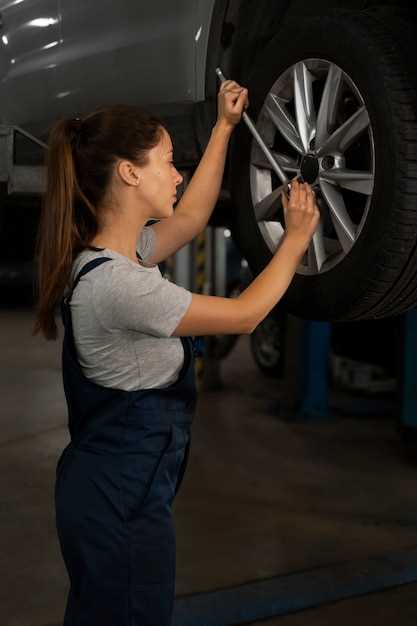Wheel Balancing vs. Alignment – Key Differences

In the realm of automotive maintenance, wheel balancing and alignment are essential procedures that ensure optimal vehicle performance and safety. While both processes are crucial for the proper functioning of your car, they serve distinct purposes and address different issues related to your vehicle’s wheels.
Wheel balancing refers to the process of equalizing the weight distribution of the tire and wheel assembly. This is vital for preventing uneven tire wear and enhancing the overall driving experience. When your wheels are properly balanced, you’ll notice a smoother ride and reduced vibrations, which can lead to longer tire life and improved fuel efficiency.
On the other hand, wheel alignment involves adjusting the angles of the wheels to ensure they are set to the manufacturer’s specifications. This not only contributes to better handling and control of the vehicle but also plays a significant role in tire longevity. Misalignment can lead to rapid tire wear, decreased fuel efficiency, and even safety hazards on the road.
Understanding the key differences between wheel balancing and alignment is crucial for any vehicle owner. By keeping both processes in check, you can ensure that your vehicle operates efficiently and safely, ultimately saving you time and money on repairs and maintenance.
Understanding the Role of Wheel Balancing in Tire Longevity

Wheel balancing is a crucial maintenance procedure that directly impacts tire longevity. Properly balanced wheels ensure that the weight of the tire and wheel assembly is evenly distributed. This balance reduces vibrations and uneven wear, prolonging the life of your tires.
When wheels are unbalanced, it can lead to several negative consequences:
- Uneven Tire Wear: Unbalanced wheels can cause certain areas of the tire to wear faster than others, reducing their overall lifespan.
- Increased Vibration: Unbalanced tires generate vibrations that can be uncomfortable for the driver and passengers and can lead to premature component failure.
- Poor Handling: Maintaining proper balance improves vehicle handling, ensuring that drivers have better control over their vehicles.
- Reduced Fuel Efficiency: Unbalanced wheels can cause additional rolling resistance, leading to higher fuel consumption.
To achieve optimal wheel balancing, a professional technician will use specialized equipment to detect and adjust the weight distribution of the wheels. This process involves:
- Mounting the wheel on a balancing machine.
- Identifying any heavy spots that could cause imbalance.
- Adding weight to counteract these heavy spots as needed.
Regular wheel balancing checks, ideally every 5,000 to 6,000 miles or during routine tire rotations, can significantly enhance tire longevity. By ensuring your wheels remain balanced, you not only extend the life of your tires but also improve overall vehicle performance.
Identifying Symptoms of Misalignment in Vehicle Handling
Misalignment of wheels can significantly impact a vehicle’s performance and handling. Recognizing the symptoms early can prevent further damage and ensure a safe driving experience. Here are key indicators to watch for:
1. Uneven Tire Wear: One of the most common signs of misalignment is uneven tire wear. If your tires are wearing down more on one side than the other, it often indicates that the wheels are not aligned correctly. Regularly inspecting your tires can help identify this issue early.
2. Vehicle Pulling: A vehicle that pulls to one side while driving is another critical symptom of misalignment. If you find yourself constantly adjusting the steering wheel to keep the vehicle traveling straight, it’s time to have the alignment checked.
3. Steering Wheel Off Center: When the steering wheel is off center while driving straight, it suggests that the wheels are misaligned. This condition can lead to poor handling and may make it more difficult to control your vehicle, especially at higher speeds.
4. Vibration in the Steering Wheel: Misaligned wheels can cause vibrations in the steering wheel, especially at certain speeds. This sensation is often a signal that the vehicle requires alignment services to restore proper handling and comfort.
5. Increased Fuel Consumption: If you notice that your fuel efficiency has decreased unexpectedly, misalignment could be a contributing factor. When the wheels are not aligned correctly, the vehicle experiences additional drag, leading to increased fuel consumption.
6. Diminished Handling Performance: A vehicle that has poor handling characteristics, such as swaying or instability during turns, may be suffering from wheel misalignment. Proper alignment is essential for maintaining optimal handling and ensuring that the vehicle responds predictably to driver inputs.
Recognizing these symptoms promptly will help maintain your vehicle’s health and safety. Regular alignment checks are essential for optimal wheel performance and handling efficiency.
When to Schedule Wheel Balancing and Alignment Services

Proper maintenance of your vehicle’s wheels is essential for ensuring safety and optimal performance. Scheduling wheel balancing and alignment services at the right times can significantly extend the life of your tires and improve your driving experience.
Wheel balancing should be considered whenever you notice uneven tire wear, vibrations in the steering wheel, or a shaky ride. These symptoms often indicate that the weight distribution across your tires is imbalanced, potentially leading to further damage if not addressed promptly. It is also advisable to balance your wheels whenever you install new tires or after tire rotations, as these actions can affect the balance.
On the other hand, wheel alignment is critical if your vehicle pulls to one side while driving or if your steering wheel is off-center when driving straight. Misalignment can occur due to hitting a pothole or curb, which can negatively impact tire wear and handling. It is recommended to check your alignment every 6,000 to 10,000 miles or during regular maintenance services to maintain optimal handling and tire longevity.
By keeping a close eye on these signs and scheduling wheel balancing and alignment services accordingly, you ensure that your vehicle remains safe, efficient, and comfortable to drive.

